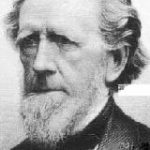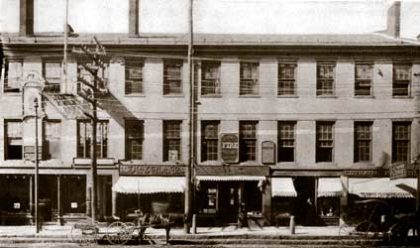History of UUCW
First Universalist Church During the 1918 Spanish Flu Pandemic
First Universalist Church played an important part in responding to the needs of orphaned infants and children during the 1918 Spanish Flu Pandemic. The video below chronicles the participation of many Unitarian and Universalist congregations during that time of national crisis. Rev. Aaron Payson’s sermon in the Spring of 2020 underscored this history as reported in the Telegram & Gazette.
The History of the First Universalist Church
– Researched and written by Geneva Wheet Rice (edited for publication by Kristen B. Payson & Ana Gregory) (Click HERE for a downloadable PDF)
Introduction
This history of the First Universalist Church of Worcester (renamed the Unitarian Universalist Church of Worcester in 1968) is compiled from the unpublished history written by the former church historian, Mrs. Arthur J. Knight, who acknowledges her debt to an earlier history by Daniel Seagrave; from old and sometimes hard-to-decipher handwritten records of the Society and the Church; from copies of the church newsletter, “The Message”; and from 14 scrapbooks of newspaper clippings.
Because these sources provide such a wealth of interesting material, this document divides the history into:
- A chronological account of the most important happenings in the Church, from its beginning with the first preaching of Universalism in Worcester in the 18mo30s to 1970.
- Biographical sketches of each of the 15 ministers.
- A description of the four buildings in which the congregation has worshiped.
- An account of the numerous organizations of the Church, from the first Sunday School and the first Women’s Circle, both organized in 1841, to the groups of 1970.
- A record of wartime service by men and women of the Church (not completed yet).
Note: An appendix will be added later with a list for reference the first signers of the Constitution (1841); the first members (1843); Society and Church officials, including ministers, parish assistants, clerks, trustees, treasurers, collectors, deacons, and church school superintendents; those who have gone out from the church into the ministry; presidents or chairmen of organizations; and charter members and parish members noted for accomplishments outside the Church.
History
The Unitarian Universalist Church of Worcester has a goodly heritage beginning with the activities of the pioneers, whose strong convictions led them to brave the hostility of their fiercely Calvinistic neighbors and adhere to the Universalist faith.
In 1834, at the time of the first Universalist preaching, Worcester was a town of about 7,500 people served by seven established churches with large and flourishing congregations: Old South Congregational, Second Parish (later Unitarian), First Baptist, Central Congregational, Wesley Methodist, Christ Church (Catholic – later St. John’s), and Union Congregational. All Saints Episcopal Church was incorporated and holding services but had no building.
Quite in contrast to the doctrines of these conservative churches was the preaching in Worcester by the Rev. Dr. Lucius Paige of Cambridgeport and Hardwick. He preached in the town hall on weekday evenings on Jan. 27, Feb. 5, April 14, and Sept. 15, 1834, to a gathering of about 200, mostly men. Few women dared to be seen in such an unpopular place. In fact, by many, Universalism was believed to be the open door to wickedness and crime.
Universalism was firmly established in Massachusetts by that time, and churches in Milford, Hardwick, Oxford (where Hosea Ballou was ordained in 1794 in the oldest Universalist Church building in America), and Charlton especially, lent financial aid and moral support to the small Worcester group.
Following Rev. Paige’s meetings, services were held occasionally by such Universalist pioneers as Hosea Ballou, Thomas Whittemore and others prominent in the denomination. By 1840, the Rev. Joseph O. Skinner was engaged to preach for three months.

The growing group of adherents to the liberal faith had pleasant associations with Second Congregational Society, later Unitarian, which, under the wise administration of Dr. Aaron Bancroft, father of historian, George Bancroft, had become not only liberal in faith but rich in numbers, wealth, and social influence. These members were reluctant to join the little band of eight or 10 families who determined to establish a new organization. A quotation from Dr. Gunnison’s historical sermon preached in 1893, at the semicentennial of the First Universalist Church, points up the task these valiant men and women had undertaken:
The faith was everywhere misunderstood and traduced. There were social ostracisms which long ago passed away, and religious ostracisms which still persist. Those ostracisms persist.
In spite of these drawbacks, the little group called Stephen Presson Landers as pastor at a salary of $500 a year. One June 3, 1841, they founded the First Universalist Society of Worcester in accordance with the laws of Massachusetts, meeting in the office of Col. Pliny Merrick, Justice of the Peace, adopting a constitution presented by Rev. Landers, electing a clerk and treasurer, a collector, and a standing committee of three. Thirty-one men signed the constitution.
Meetings were held in Brinley Hall, 340 Main St., until a church was built at the corner of Foster and Main streets and dedicated in 1843.
This church was financed by subscriptions and the foundation of a stock company, The First Universalist Meeting House Proprietors, who rented the second floor to the Society for $250 a year and derived a profitable income for the stockholders by rental of stores on the first floor.

During the summer and autumn of 1842, the congregations were much more regular and considerable gains in numbers and interest were evident. Part of the interest was due to the agitation of the Millerites, or “Second Adventists,” who were predicting the second coming of the Lord and the fiery destruction of the world in 1843. Rev. Landers recorded that he made a public reply to Mr. Miller, pointing out, among other things, the mistake made about the coming of Christ. Indirectly, the Millerite furor had contributed to the growth of the Universalist congregation and encouraged the building of their own meeting house.
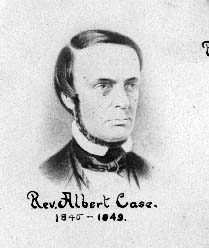
Rev. Landers resigned in June 1844, and was succeeded by the Rev. Albert Case. He was prominent in Odd Fellow and Masonic lodges, serving in high offices in both orders while proving to be a satisfactory minister. A request that he withdraw his resignation, submitted in 1849, was refused with the reply that he felt it better for both the church and himself to resign. He did so in May 1849.
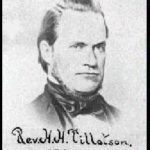
Rev. Case was succeeded in June 1849 by the Rev. H.H. Tillotson, a man of outstanding intellectual ability whose sermons attracted such numbers that in 1851, galleries had to be added to the church to accommodate the increased congregation. No doubt the Society received considerable attention with Rev. Tillotson, a versatile Bible scholar, debated on two evenings with a layman from the Second Advent Church. Another significant incident during Rev. Tillotson’s pastorate was the recognition of the support give the Society by the active Ladies’ Sewing Circle; a resolution of appreciation was transmitted from the Society to them by Mrs. Tillotson.
After serving with distinction throughout his term, Rev. Tillotson resigned in October 1852.
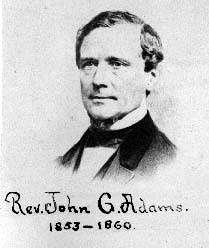
In April 1853, the Rev. Dr. John Greenleaf Adams took up his work in Worcester at an annual salary of $1,000, later increased to $1,400.
During the winter of 1857, a great revival stirred the city. Many gathered for prayer and conference with Rev. Adams at his best. Because the church had no suitable vestry, meetings were held in a room owned by Samuel Harding in his block at the corner of Front and Trumbull streets. There Deacon Pratt lent a carpet later bought by the Sewing Circle, which purchased other necessary furnishings. These rooms were used for religious and social affairs until 1870.
During this period, Children’s Sunday, called Lily Sunday was first observed. Several customs of the Society were changed during this pastorate. The use of wine for communion was abandoned; the custom of giving the minister a vacation of two Sundays in August was voted in 1854, a substitute being supplied; and in 1857 two Sundays without a substitute were granted. Not until 1867 was the pastor’s vacation period increased to one month.
In 1865, a sexton was appointed at $95.50 a year, and through the years was succeeded by custodians who served faithfully for long periods. An interesting note from an 1878 trustees’ report states, “Your sexton holds a special police appointment in the interest of better government of the youths who sometimes sow their wild oats in the gallery.”
The second annual meeting of the Massachusetts State Convention was held in the Worcester church in 1854, the first having been held in 1844.
Sixty-four names were added to the membership list before Rev. Adams resigned to the great regret of the parish and on March 17, 1860, accepted a call to Providence, R.I.
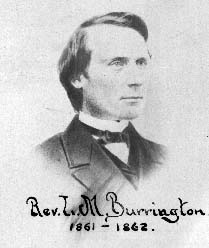
The Rev. Lindley Murray Burrington served such a short time, July 1860 to January 1862, that he made little impression on the life of the Church. It was during his pastorate, however, that plans for a new church building were made and a subscription book circulated by a committee of three. Only one new member was added to the membership of 96 before ill health caused Rev. Burrington to leave the heavy work of this Church.
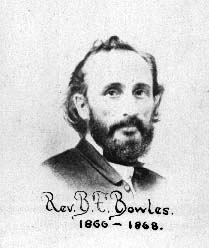
The Rev. Benjamin Franklin Bowles was minister for a short period between the two pastorates of the Rev. Thomas Elliott St. John. Rev. Bowles came to Worcester from Manchester, N.H., at a salary of $2,000 plus moving expenses.
Rev. Bowles’ installation on Oct. 10, 1866, was combined with the celebration of the 25th anniversary of the founding of the Society, with three of the earlier ministers taking part: his predecessor, Rev. St. John, preached the sermon; Rev. Adams gave the prayer; and Rev. Landers gave the historical address covering the first 25 years of the Society.
Before Rev. Bowles’ resignation in 1868, 31 members had united with the church.
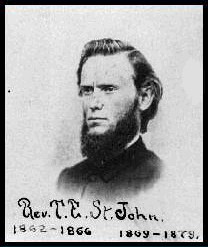
Rev. St. John was the only First Universalist ministers to serve two pastorates. The first began in April 1862 and continued for four years until he accepted a call to Chicago. After his successor, Rev. Bowles, resigned in 1868, Rev. St. John was asked to return, and he did so in February 1869. He first came to Worcester from New Bedford, Mass., at a salary of $1,000, later increased to $1,700.
In 1862, soon after Rev. St. John began his work, the church, under a committee of five, was reorganized by the adoption of a new constitution and revision of the membership list. Many of the 128 enrolled had moved away or withdrawn; as many of these as possible were consulted and, on request, given a letter of dismissal or transfer. The revised list included 90 active members.
Among Rev. St. John’s records, dated Sept. 30, 1863, is a most unusual item:
A meeting was held at the close of divine service, the object of which was to administer the ordinance of baptism to Sister E.L. Houghton. The members present repaired to the grove near Rural Cemetery and the candidate was led down to the water and baptized by immersion.
Two years later, baptism by immersion is mentioned again when Sister Harriet A. Merritt was baptized at the same place after a communion service.
A subscription list for a new church circulated in 1861 credited the first donation to the building fund as the bank account of $500 – given by Mary Mason on her deathbed – and further contributions from the penny collection of the Sunday School pupils. With these sums as a start, a lot 90 by 120 feet on Pleasant Street was bought for $6,250, and a committee appointed to get plans and estimates for a building to accommodate the congregation, which had outgrown the old church.
During Rev. Bowles’ pastorate (1866-68), while Rev. St. John was serving in Chicago, no further action was taken on the new church, but after Rev. St. John’s return in February 1869, interest was reawakened and plans were drawn and accepted by a vote on Oct. 5, 1869.

The cornerstone was laid on June 8, 1870, and the beautiful new church was dedicated on June 28, 1871.
Rev. St. John’s pastorate continued for eight years, until April 1, 1879, with the Church prospering and adding 71 members during his two terms. Twice during the period, in 1864 and 1877, the Worcester Church entertained the Massachusetts General Convention.
The Rev. Dr. Moses Henry Harris succeeded Rev. St. John, coming to Worcester Oct. 5, 1879, at a salary of $2,000 after a pastorate of nearly 10 years in Brattleboro, Vt. His coming marked a new era in the life of the church, and his pastorate rivaled its predecessors in church extension.
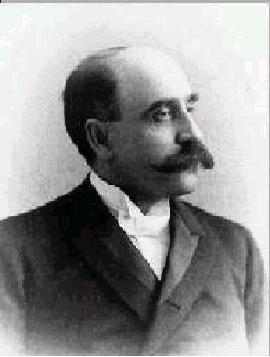
Because there was now little opposition to Universalist doctrines, he did not have to preach on theological matters but could preach on current topics, and usually was greeted by a crowded church on Sunday mornings.
On Jan. 21, 1880, Lot 1048 Section 3 in Hope Cemetery was purchased for $20 and used for the burial of several people connected to the church.
Concerned about the debt of $23,500 owed on the new Pleasant Street building, Rev. Harris urged that the debt be wiped and formulated a plan to pay off the entirety in three installments, Sept. 1, 1881; March 1, 1882; and Sept. 1, 1882. His sermon of Feb. 20, 1881, the date determined upon for the pledging, contrasted the Church of 40 years earlier, with eight families and an average congregation of 50, with the current membership of 450 families in the Church and Sunday School with an average congregation of 1,000. Stressing the need to liquidate the date, he concluded with a strong statement that if the needed sum were not raised, he would feel obliged to resign to go where the people, not a bank, owned their church. At the service, $26,000 was pledged, in amounts varying from $5 to $2,000.
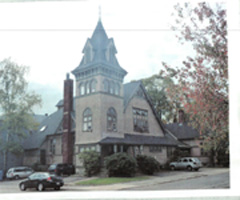
In 1883, Rev. Harris emphasized the need for a mission school in the southern part of the city. From services held in winter 1884 in the home of Mr. and Mrs. Martin Russell at 10 May St. grew All Souls Church. A lot on Kilby Street given by Lucy A. Stone to First Universalist Church, in trust for a group planning to organize a Society, was deeded to All Souls Parish when it was incorporated in 1884. A chapel was built in 1885, and later a church, which Rev. Harris served as pastor from 1896 to 1902.
In addition to fostering this daughter Church to which 13 members of the First Universalist Church transferred, Rev. Harris was responsible for 167 new members added and 74 children dedicated during his 10-year pastorate.
At a banquet on the 10th anniversary of Rev. Harris’ ministry, the parish, ministers of the Episcopal Church, Church of the Unity, Congregational, Unitarian and Universalist churches as well as civic authorities paid tribute to him, with Mayor Winslow speaking of the growth of the Church as a power in the city.
In 1885, the “Winchester Confession” was adopted as the Declaration of Faith of the Church, superseding the Declaration adopted in 1862; the constitution was amended; and the list of members was revised to total 155 active members.
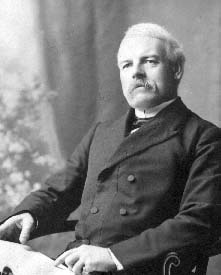
Dr. Almon Gunnison came to Worcester after a highly successful pastorate of 19 years in All Souls Church, Brooklyn. He was a man of great culture and literary ability, who gave himself freely to every good cause.
Above all, he was a man whose gracious personality made friends for himself and for the Church. Probably no one did more to mitigate what antagonism against Universalism still existed in the orthodox community. A good illustration of this increasing tolerance was his election to the presidency of the Ministers’ Association, which, when he first came to Worcester, had refused him membership because he was a Universalist.
In fact, over the years hostility to the Universalist Society no longer prevailed openly. In no small measure, the improvement was due to respect for individuals of the Society. A notable case is recorded in Rev. St. John’s address at the 50th-year anniversary celebration. Deacon Joseph Pratt, after his retirement, had occasion to call at the wire mill on Grove Street to see Henry Goddard. After Mr. Pratt had left, Mr. Moen of the company said to Mr. Goddard, “If I ever get to heaven I shall expect to meet Deacon Pratt in that happy place.” “Not withstanding his Universalism?” asked Mr. Goddard. “I care nothing about that,” answered Mr. Moen. “A man who can live the life and do the work that he has done in this city for the past fifty years is worthy of the best place heaven has to give.”
Under Dr. Gunnison’s preaching, the Church attained a position in the community not held before; services were largely attended, and the annual lecture courses based on his extensive travels drew large audiences.
In June 1891, the 50th anniversary of the Society was observed with a historical address by Rev. St. John covering in detail the history of the 50 years past. On the same day the Union Association of Universalists met at All Souls where the cornerstone of their church was laid, and in the afternoon adjourned to the First Church. In the evening a banquet for 400 was held in Continental Hll, in the old First Church building. In October of this same year, the Church was host for the first time to the General Convention.
With the growing prosperity of the Church, extensive repairs were considered necessary, and during the summer of 1897, work was done that included re-slating the roof, redecorating and paneling the auditorium, installing stained glass windows, and replacing the boiler. The renovations totaled $18,587, again a heavy debt for the parish.
In November 1899, Dr. Gunnison accepted the presidency of St. Lawrence University, a post that had been offered to him several times. At the reception given him upon his departure, the deep and sincere affection that his congregation and the citizens of Worcester felt for him and Mrs. Gunnison was expressed in laudatory speeches by clergy and college and civic officials, and in gifts presented to them by the parish.
During his pastorate, more than 200 members were added to the rolls, and the Sunday School, for which he himself taught a Bible class of 150, numbered 600.
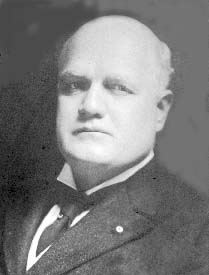
By far the longest pastorate was that of Dr. Vincent Eaton Tomlinson, who came immediately after Dr. Gunnison left for St. Lawrence. Dr. Tomlinson served from May 1, 1900, to May 1, 1937, when he was made pastor emeritus. None was more beloved by his congregation and those outside who sought his ministerial services, and none was more respected and honored by clergy and civic associates with whom he worked.
For the record of the chief events during his 37 years at the church, we quote from a résumé in his handwriting:
“Sept. 1900 established the church paper, The Message, which has done much to inform and unify the parish, also has become an historical record of the parish life since.
“Raised the debt of $11,500 entailed by renovation of the church in 1897.”
On May 25, 1903, the mortgage was burned in a great celebration.
In 1903, Rev. Tomlinson’s duties were somewhat lightened by the appointment of Mrs. E.A. Hunt as parish assistant.
“Bought the parsonage in 1919 — all paid for — pledges made at a Church service in the spring of 1919.
“Built the parish house in 1927 — cost $125,000 with lot.
“Twice the General Convention held with us, 1917 and 1933.” In 1933, a new Declaration of Faith was adopted in Worcester.
“Permanent funds have grown from $7000 to over $60,000.
“Union Good Friday Service instituted.” These services were continued in the First Universalist Church until 1954, when the Worcester Council of Churches chose Chestnut Street Church as the meeting place.
“New organizations: Men’s Club, Young Men’s Club, Boy Scouts, Girl Scouts, Young Women’s Aid, Altruistic Circle, a reorganized Y.P.C.U. Dramusart, Clara Barton Guild, Wilmarth Class, Jr. Z.E.H., Junior Choir and Cradle Roll also added.
“Our church during my pastorate, I think, has maintained its reputation of democracy and unity, likewise of sociability.”
Several times during his pastorate, Dr. Tomlinson was granted leaves of absence to lecture in the interests of the General Convention and to travel. In the winter following his 1934-35 trips around the world, he gave a series of lectures that benefited the Parish House Fund by $1,000.
Dr. Tomlinson’s affiliation with civic organizations not only increased his host of friends, but also enhanced the prestige of the Church. In denominational organizations, he was no less active.
On several occasions, “the Doctor,” as he was affectionately known, was honored by receptions attended by the parish and the community. On May 4, 1925, to mark the 25th anniversary of his coming to Worcester, more than 800 people greeted him and his family and expressed their appreciation with monetary gifts totaling $2,625.
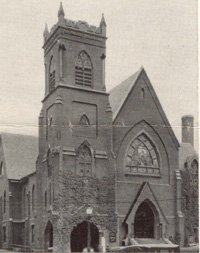
In 1922, extensive repairs were again made to the church, and in 1925, after lightning struck the spire on July 8, the appearance of the building was greatly altered by the necessary removal of the wooden upper part of the spire.
The usefulness of the church was greatly increased by the building in 1927 of a large parish house, later named the Vincent E. Tomlinson Hall.
The record of Dr. Tomlinson’s service as a minister includes the marrying of more than 1,300 couples, officiating at more than 2,500 funerals, and adding 800 members to the church.
May 1, 1937, brought Dr. Tomlinson’s resignation, which was accepted with deep regret. At a meeting soon after, his desire to buy the parsonage at 38 Sever St. was granted. At this time he was made pastor emeritus.
Shortly after, with his wife and daughter, he started on a world tour, which was cut short after five months.
The following June, he suffered a fatal heart attack. Simple but impressive services attended by hundreds of parishioners and Worcester citizens of all ranks were held on June 19, 1938, with his successor, the Rev. Joseph Wickliff Beach, conducting the service. Dr. Tomlinson’s boyhood friend and longtime ministerial associate, Dr. Lee S. McCollester of Tufts, delivered the eulogy.

In September 1930, the Rev. Donald B.F. Hoyt came as assistant to Dr. Tomlinson, working successfully with the young people and in the Church School, serving also in the Hardwick church. Rev. Hoyt’s ordination service on Sept. 14, 1930, was the first held in the church.

While Dr. Tomlinson was absent on his world tour of 1934-35, Dr. Samuel Gilbert Ayres was acting minister. He and Mrs. Ayres were active in church work and much liked by the people.
Rev. Beach came to the First Universalist Church in September 1937 after serving as co-pastor of Chestnut Street Congregational Church. In January 1938, he was unanimously elected pastor. He started his service with warm appreciation from Dr. Tomlinson, who commended him as a man of maturity with a background of fine training and widely useful Christian service, with a capacity for hard work, whose four months’ trial and unanimous election were a fine tribute to his fitness for the position.
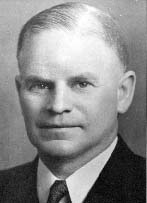
Rev. Beach and his family were greeted at an informal reception after the Feb. 1, 1938, parish meeting.
After he had become a Universalist and member of this Church on Holy Thursday, and had been admitted to the Fellowship of the Universalist denomination as one of its ministers, Rev. Beach was formally installed on May 15, 1938.
His activities started with enthusiasm and were marked through the years by especially successful work with the young people, to whom he devoted much time. The Church School membership increased; the Y.P.C.U., greatly depleted by enlistments, was built up; a discussion group of high-school age boys and girls, Hi-U (High School Universalists), was organized in 1946; and a pastor’s class for those about to join the Church was held each year during Lent. Nearly 200 members were added to the church rolls.
Rev. Beach was active in civic affairs, as vice chairman of the Department of Social Relations of the Worcester Council of Churches, as program chairman of the People’s Forum, and a member of the Inter-Racial group.
At the Akron convention in 1946, he was elected president of the General Sunday School Association. Constantly he was directing the attention of his congregation to state and national goals and activities and urging participation, unfortunately with less success than could be wished.
An important occasion during Rev. Beach’s pastorate was the second ordination in the church, held on June 29, 1939, when one of the Church young men, D. Stanley Rawson, was ordained before going to his pastorate in Caribou, Maine.
Two other important events occurred. The first was the entertainment of the Universalist State Convention, which met in Worcester May 15-16, 1940. Baptists, Congregationalists, Episcopalians, Presbyterians, Unitarians, and Universalists met as an experiment in “Cooperative Christianity” at the first Massachusetts Inter-Church convention, which had joint meetings in the Auditorium and separate meetings in the individual churches.
The second event was the celebration, on Nov. 21, 1943, of the 100th anniversary of the Church, a delightful affair with a Sunday service and a banquet attended by large numbers of present and former parishioners and addressed by Church officials, clergy, and civic leaders.
In 1939-40, the first of the improvements to the church began with the redecoration of the Auditorium; enlargement of the choir loft; installation of a new organ console and chimes; and the transformation of the Chapin Club Room into Belding Chapel, which was dedicated in member of a devoted Sunday School worker. In 1941, the heating plant was modernized by the installation of a stoker, which considerably reduced heating costs. Later redecoration programs improved the Ladies’ Parlor, coat rooms, and vestry.
Between 1938 and 1946, the $62,500 mortgage was reduced to $36,000.
Through the generosity of the Men’s Club, the large stained glass window, a reproduction of Hoffman’s painting of Christ, was illuminated by two 500 watt floodlights placed in the balcony and equipped with a timing device to turn the lights on at dusk and off at midnight. From February 1939 until January 1942, this window brought much favorable comment from passersby and those coming down Chestnut Street. In January 1942, the illumination was discontinued as a measure of public safety, in accordance with regional instructions.
This curtailment was only one of the reminders that the country was at war. On June 5, a 70-star service flag honoring those already enrolled, a gift of the Men’s Club, was dedicated. During the war years, the young men and young women in the armed services, 119 in all, were kept in touch with their church by regular monthly mailings and personal correspondence.
Because so many of the years of Rev. Beach’s pastorate covered the period of World War II, there naturally arose more than the normal amount of problems. Church activities, especially those of a social nature, were greatly curtailed by gas and food rationing; church attendance suffered, and emotions were abnormally aroused over words and actions that at other times would have been ignored or easily corrected.
As a result of the strain, after growing disagreements over convictions and pronouncements expressed by Rev. Beach during the tension of war and the postwar years, his resignation was asked for and, when given, accepted in April 1947.
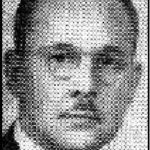
In May 1947, the Rev. Harold Scott, Th.D., became interim pastor of the church, coming to Worcester from Seattle, where he had been lecturing for six months under a Pacific Coast Foundation. In an interview, Dr. Scott made some interesting comparisons of New England and West Coast attitudes toward church matters: New England’s conservatism “breeds an important sort of liberalism which though not accepting radical views guarantees their right to be heard.” On the West Coast, Church news was, by necessity, handled through commercial advertising agencies with advertisements on buses and blinking neon signs on church doors.
Doubtless Dr. Scott’s contact with this type of church promotion was responsible for his transformation of “The Message,” hitherto a sedate monthly, into a weekly sheet mimeographed on bright yellow paper and containing “pithy” comments from the minister.
On the more serious side, Dr. Scott said his preaching would follow three lines: establishment of a religious philosophy; application of that philosophy to the contemporary scene; and “the ancient function of the Church to comfort, advise, strengthen and inspire.”
Dr. Scott gave excellent lectures on the Bible, his specialty, and on modern trends in Universalism that were attended by study Groups during Lent and at fall sessions in 1948. He also spoke over radio station WLAW at 9 a.m. on several Sundays in 1949.
With his experience as Superintendent Of Churches in Alabama and as an organizer of new churches, Dr. Scott cleared accumulated records and prepared a new constitution and bylaws designed to modernize the church administration. The most important provision of this constitution was the elimination of the dual organizations, the Society and the Church, which had existed since 1841 and 1842. The Society was concerned with what we might call corporal matters, the building and the finances. The Society owned the property and was regarded by the states as the financially responsible legal body. The Church, under the pastor and the deacons, had authority over “religious” matters. The bylaws enlarged the Board of Management, provided for rotation in office, and placed the responsibility for the Church on the Board of Management. Pew rents were abolished.
This new constitution and the bylaws were adopted by the parish in May 1948, and in December the Church was incorporated as the First Universalist Church of Worcester. Because of the difficulty of determining the actual membership of the parish, it was provided that signing the constitution and bylaws established a voting list and made the signer a Church member.
An event of interest in November 1949 was the dedication of a marker and memorial fence with a planting of greenery in front of the church, honoring the memory of Probate Judge Harry H. Atwood, long active in Church offices and moderator for 20 years.
In February 1950, after having resigned on Dec. 1, 1949, Dr. Scott accepted a call to the First Unitarian Church in Salt Lake City, replacing there the editor of the church magazine, “The Humanist.”
Both Dr. and Mrs. Scott had been active in all church affairs, and Mrs. Scott was especially missed because of her friendliness and her willingness to serve wherever she was most needed.
The Rev. George J. Spencer began his duties as minister on Sept. 1, 1950, coming from the First Universalist Church of Swampscott, where he had served for three years after having been a field worker for the Massachusetts Universalist Convention.
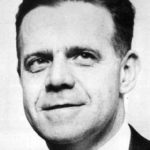
Because the Worcester church had no parsonage, a car, purchased through contributions, was furnished to Rev. Spencer. He immediately began a series of calls to acquaint himself with his parishioners, and started meetings with the U.Y.F., which grew so large that it was soon divided into senior and junior groups.
On Nov. 5, an impressive installation service was held, followed by a reception in the parish house.
Rev. Spencer’s sermons were so popular that in response to numerous requests, many were mimeographed and some tape-recorded to be Rplayed to shut-ins. He was in great demand as a speaker before various groups, denominational and civic, and his series of book reviews and Lenten study courses were well-attended.
In 1951, Candlelight Vespers Services, at which new members were received, became a part of the Christmas season tradition.
The Massachusetts Convention met again in 1952 in the Worcester church and participated in the meetings of the Massachusetts Inter-Church Convention commemorating the 50th anniversary of tho founding of the Massachusetts Council of Churches.
In 1952, the first of the memorial services honoring Clara Barton was observed in cooperation with the Worcester Red Cross. On March 2, the morning service was addressed by Adm. Wat Tyler Cluverius, president of Worcester Polytechnic Institute, who, as a young naval officer, had aided Clara Barton in landing supplies in Cuba. An exhibition of Miss Barton’s diaries and papers loaned by her grandniece, Miss Saidee Riccius, and interesting articles from the birthplace drew many visitors.
In 1953, a second Red Cross Sunday was held, with the morning service rebroadcast over station WNEB, and a drama “Builders of Destiny,” a combination of pictures filmed at the birthplace and spoken parts, was given in the evening.
A tradition was ended in 1954 when the last of the Good Friday services, started in 1901 by Dr. Tomlinson, was held in the church; the next year, the Council of Churches chose Chestnut Street Church as the meeting place.
With the Worcester Expressway crowding on the limited parking space and consequently causing decreasing attendance, the heavy mortgage, and the need for extensive building repairs, it was decided to seek a new location and to sell the property. The church building was sold to the Worcester Catholic diocese for a youth center and social headquarters for nearby St. Paul’s Parish.
Through the untiring effort Fred Case, a lot on Holden Street at the corner of Shore Drive was bought. To this tract, the Norton Co. added a generous gift of 16,100 square feet of land, increasing the Holden Street frontage to 210 feet.
The closing weeks in the old church were busy ones, with an impressive Communion service on Holy Thursday, April 7, 1955, a three-hour Good Friday service, and an Easter program in the beautifully decorated auditorium.
Culminating the farewell observances was a Reunion Sunday on April 17 attended by former members of the First Universalist Church living outside the city and a large number of Worcester members and friends. Before the morning worship, a coffee hour was held in the vestry, where Miss Esther Damerell and her committees had arranged an exhibit of memorabilia from the first church, including the Communion set, the Bible, and volumes of church programs, clippings, and photographs.
On April 12, a public auction of furnishing that were not to be stored was held.
On Sunday, April 24, services were held at 58 Holden St. in the North Worcester Aid Society Hall, which was to be the home of the First Universalist Church until the completion of the new building at 90 Holden St. (in 2023 our address changed to 140 Shore Drive).
Promise that the new locality was the area in Worcester where a Protestant church was most needed was borne out by the immediate attendance of the neighborhood residents. Many of these were among the 42 new members admitted at the candlelight service on Dec. 18, 1955, and others who joined later.
A very beautiful and dramatic dedication of the church took place on Nov. 11, 1955. The sanctuary was complete, but Fellowship Hall, while usable, was far from finished and required many hours of volunteer labor.
Early in 1956, two services were held, one at 9:30 a.m., coinciding with the Church School hour, and a second at 11 a.m., with a coffee hour between to bring together the two groups of congregants.
In October 1957, the square in front of the church was dedicated as Clara Barton Square at a special ceremony between the two services. Participating were Mayor O’Brien; a representative of the Red Cross; Mrs. Earl Landry, president of the Woman’s Association; and Urano S.N. Caranchini, who conceived the project.
The Church program was increasingly busy. New organizations were formed, including a Youth Orchestra and one “just for fun” for adults, and a 20-40 Club.
The ordination of a second church-raised man, James Mott, the first in the new church, was held on Sunday evening, Dec. 14, 1958.
Early in November, Rev. Spencer read his resignation, to take effect Jan. 4, 1959. He was leaving Worcester to become associate superintendent of the Universalist Church of Ohio. A pulpit committee to select a new minister was appointed and began work at once. At a special parish meeting on Nov. 17, the resignation was accepted, and it was voted to purchase as a parsonage the property at 202 Holden St.
On Jan. 4, 1959, after a final sermon title “And Finally, Brethren,” Rev. Spencer was honored at a farewell dinner in Fellowship Hall. A generous purse was presented to him from the congregation, as well as one from the young people.
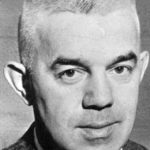
Guest ministers supplied the pulpit while the committee visited churches to hear possible candidates. On the first of March, the Rev. Donald Hinckley of West Paris, Maine, the unanimous choice of the pulpit committee, preached; at a parish meeting after the second morning service, the congregation voted to call him. Rev. Hinckley preached his first sermon as pastor on the first Sunday in April 1959. He and Mrs. Hinckley were greeted at a reception on April 26, and he was installed May 24, 1959.
During his pastorate, he gave several lecture series with discussion periods, and encouraged such series under the Adult Education group of the Religious Education Committee. Because the proposed consolidation of the Universalist and Unitarian denominations was of great concern, the sermons and the study groups considered the subject in detail. When the vote expressing the membership’s sentiment was taken on Feb. 28, the results showed 102 in favor of consolidation, with four against and one abstention.
On May 23, 1960, in Symphony Hall in Boston, 2,200 Unitarians and Universalists met at a most impressive evening ceremony to celebrate the merger of the American Unitarian Association and the Universalist Church of America. Many attended from the Worcester church, represented by the minister, Mrs. Fred B. Hall, and Urano Caranchini, official delegates appointed by the Board of Management.
The Rev. Philip Randall Giles of the U.C.A. read his Prayer of Thanksgiving from the old Oxford church pulpit from which Hosea Ballou was ordained. The lessons from the great scriptures of the world were read by the Rev. Dana McLean Greeley from the pulpit long occupied by William Ellery Channing.
After the sermon by Rev. Donald Harrington of the Community Church of New York City, a Kindling Ceremony was held, and the entire congregation united in a pledge of allegiance to the now Unitarian Universalist Association.
Rev. Hinckley was most enthusiastic over the Beacon Press Series and supported the Religious Education Committee in basing the curriculum of the Church School on its courses.
Many of the older people, especially the shut-ins and hospitalized members of the parish, appreciated Rev. Hinckley’s many calls.
During Rev. Hinckley’s pastorate, with Fred Hall’s catch slogan, “Let’s finish Unit 3 before ’63,” volunteer contributions enabled completion of a large part of the unfinished work on Fellowship Hall.
After due consideration, the Board authorized the return to one service. Beginning Feb. 19, 1961, the sessions were held at 10 a.m., with the Church School meeting at the same time and the coffee hour at the close of the service.
In June 1961, Rev. Hinckley submitted his resignation, to take effect Sept. 1. Before he left to return to the pastorate he had earlier served in Pittsfield, Maine, he was honored on Aug. 17 at a dinner at the Stockholm Restaurant “for his dedicated zeal and accomplishments in the cause of Unitarian Universalism.”
The 1961-62 church year started with guest ministers and a busy, ongoing program, including the usual organization meetings, plans for the November World Wide Bazaar, and, most important, a Religious Education weekend with the Rev. Edna P. Bruner, field consultant for the Department of Education of the Unitarian Universalist Association, spending three days in Worcester preaching at the Sunday service and meeting with the Church School personnel.
“The Message,” a cheerful, informative weekly under its editor, Harold Sherman, expanded with two sides of the page, featuring news of the Church and Church School and an intriguing series of interviews with members of the parish done by “M. Howe.”
In October, the Pulpit Committee presented the Rev. Eugene H. Adams as their choice to become the 14th minister of the church. As is recommended by denominational headquarters, he, with Mrs. Adams, spent a week in Worcester meeting with Church officers and organizations and preaching on two Sundays. On Oct. 22, 1961, at a parish meeting after the morning service, the congregation issued a call to Rev. Adams.
This parish meeting was preceded by one on Oct. 19 that approved a new Constitution and bylaws, streamlining these documents “to conform to actual practices, to give members more of a say, and to create a more flexible structure in which the Board may operate.”
Rev. Adams preached his first sermon on Nov. 5 and contributed to “The Message” a column, Parson to Person, in which he discussed the upcoming sermon. On Dec. 10, the sermon, “Question-Box Sermon,” answered questions the congregation had submitted on a questionnaire previously sent out. Later, a “Talk-Back Session” after the coffee hour offered a summary of the day’s sermon for the Church School teachers and an opportunity for all to discuss it with the minister; this aimed to involve members in a consideration of the content of the sermons.
Rev. Adams was installed on the evening of Dec. 10 at an interesting ceremony followed by an informal reception in Fellowship Hall. The Rev. George J. Spencer, administrative assistant of the Massachusetts Universalist Convention, preached the sermon.
In addition to various discussion series, in March 1962 the Adult Education Committee presented the first of eight lectures and discussions titled, “Man’s Response to Contemporary Problems.” The lecturers include staff members from the Worcester colleges and the Worcester Foundation for Experimental Biology. This Sunday evening series attracted many from outside the church and received much newspaper publicity.
One of the pleasant events of the year was the honoring of six members associated with the Church for many years: Miss Pauline Brennan, Mrs. Nicholas J. Skerrett, Mrs. George B. Van Buskirk, Mrs. Guy Stephen, Mrs. Nathaniel B. Dunbar, and Mr. Philip H. Delong.
While Andrew C. Fuller was chairman of the Board, this custom was continued, and at the Fellowship Dinner on Oct. 8, 1964, eight members whose service to the Church totaled 457 years were honored. The Fun and Fellowship Committee, under Edith Van Buskirk and Cathy Nickerson, was responsible for the awarding of framed certificated beautifully lettered by Miss Helen Hamill to the following:
Miss Pauline Brennan – 63 years of service
Mrs. Albert Knapp and Mrs. Alice Graves – 62 years
Mrs. George Van Buskirk and Mrs. Nicholas Skerrett – 58 years
Mrs. William Arter – 53 years
Miss Mabelle Frost – 51 years
Miss Ruth Tomlinson – 50 years.
On Oct. 15, 1965, also at a Fellowship Dinner, 50-year plaques were presented to Mr. and Mrs. Kenneth Sawyer, Mrs. Harold Putnam, and Mrs. Everett Park.
More and more, the Church program stressed civic involvement. Increasing participation in civic organizations by members and by Rev. Adams included meetings in the church of the Memorial Society of Massachusetts, planned to inform those interested in pre-arranging funeral plans; the World Federalists; and the Humanist group. This latter group, with the John Street Baptist Church, organized a Negro Placement Bureau, called the Worcester Fair Employment Committee, to register and classify Negroes of working age. Members of the Church worked with the Committee, which placed 15 of the 50 registered.
Becoming increasingly devoted to the cause of civil rights, Rev. Adams made trips with groups protesting in Washington, D.C., and took part in the Selma, Ala., march participated in by many Unitarians and Universalists. Unfortunately, these activities, which took him away from his church, alienated many of the congregation, with a resulting drop in church attendance and financial support.
In the early summer of 1966, Rev. Adams accepted a call to the Unitarian Church in Jamestown, N.Y.
Once more the Worcester First Church was faced with selecting a new minister. While guest speakers were supplied by national headquarters carried on the Sunday services, a committee made up of Helen Hamill, Hannah Hyatt, Shirley Irvine, Michael Cowell, Urano Caranchini, Walter Knapp, Romeo Moruzzi, Rom Sarup, and Robert Langford, chairman, sought a new minister. To assist the Pulpit Committee in determining the type of minister desired by the majority of the congregation, a questionnaire was mailed to members and nonmembers.
The Committee searched diligently and deliberately. Their presentation of the Rev. Paul B. Henniges of Racine and Kenosha, Wis., met with confident approval. In November 1966, Rev. and Mrs. Henniges spent part of a week meeting parish members informally and talking with various groups. After hearing Rev. Henniges preach on Sunday, the congregation, at a parish meeting after the morning service, duly issued a call to him.
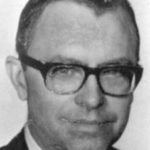
Rev. Henniges was installed on April 23, 1967, with a simple but impressive service, with representatives of the Unitarian Universalist Association; the Rev. Dr. Homer A. Jack, a theological school classmate of Rev. Henniges; the Rev. Deane Starr; and Dr. Kenneth Mosman of the Church participating. The Rev. Dr. Donald S. Harrington, minister of Community Church, New York City, preached the sermon.
Rev. Henniges proved an able administrator devoted primarily to the church, as he expects committee members to be, and he has emphasized churchmanship as essential to the prosperity and growth of the First Universalist church.
At a special parish meeting on March 24, 1968, a change in the name of the church was adopted. The First Universalist Church of Worcester officially became the Unitarian Universalist Church of Worcester. The change was made to conform to the new name of the denomination adopted in 1961.
On April 19, 1968, at the annual parish meeting, the members voted a change in the new constitution and bylaws. Instead of electing a board member who would become board chairman, they elected a moderator. He was to serve for one year and work closely with the minister.
From the spring of 1969, when Rev. Henniges’ resignation was accepted, the pulpit was again without a settled minister, and until May 1970 was supplied by visiting ministers or lay speakers from the Board or the congregation.
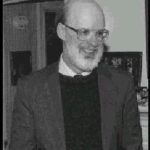
On May 31, 1970, after he and Mrs. Miller had met with Church officials, committees, and members of the congregation and he had preached the sermon, “Survival Is Not Enough,” the Rev. David J. Miller was unanimously called to the Church. He began his duties on Aug. 15, 1970, after closing his pastorate in the Unitarian Universalist Church of Rutland, Vt.

